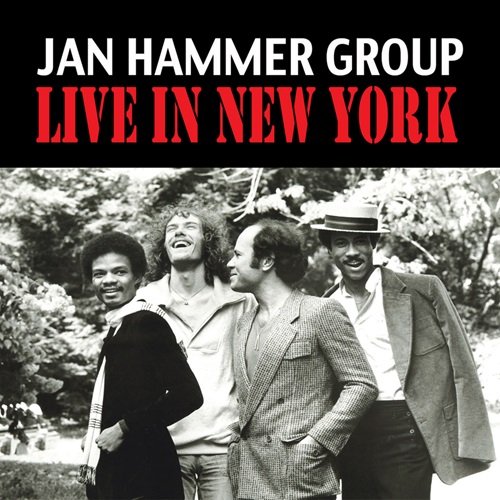The Nash Ensemble - Brahms: Chamber Works (2012)
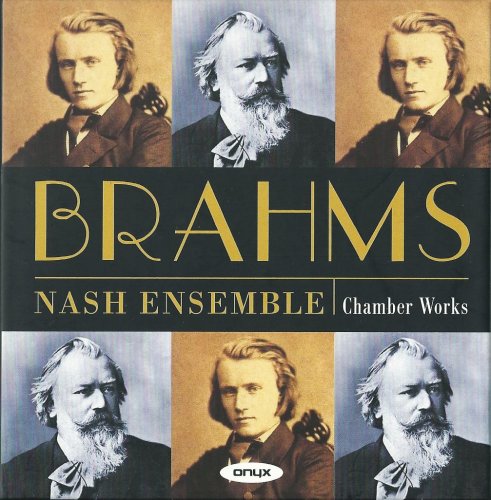
Artist: The Nash Ensemble
Title: Brahms: Chamber Works
Year Of Release: 2012
Label: Onyx Classics
Genre: Classical
Quality: FLAC (image+.cue,log,scans)
Total Time: 04:40:33
Total Size: 1.3 Gb
WebSite: Album Preview
Tracklist: Title: Brahms: Chamber Works
Year Of Release: 2012
Label: Onyx Classics
Genre: Classical
Quality: FLAC (image+.cue,log,scans)
Total Time: 04:40:33
Total Size: 1.3 Gb
WebSite: Album Preview
Johannes Brahms (1833-1897)
CD 1:
01. String Sextet No. 1 in B flat major, Op. 18: 1. Allegro ma non troppo [0:15:15.71]
02. String Sextet No. 1 in B flat major, Op. 18: 2. Andante ma moderato [0:09:42.37]
03. String Sextet No. 1 in B flat major, Op. 18: 3. Scherzo: Allegro molto [0:02:56.40]
04. String Sextet No. 1 in B flat major, Op. 18: 4. Rondo: Poco allegretto e grazioso [0:11:09.12]
05. String Sextet No. 2 in G major, Op. 36: 1. Allegro non troppo [0:14:08.31]
06. String Sextet No. 2 in G major, Op. 36: 2. Scherzo: Allegro non troppo [0:07:02.05]
07. String Sextet No. 2 in G major, Op. 36: 3. Poco adagio [0:08:53.10]
08. String Sextet No. 2 in G major, Op. 36: 4. Poco allegro [0:08:11.68]
CD 2:
01. Piano Quartet No. 1 in G minor, Op. 25: 1. Allegro [0:14:12.56]
02. Piano Quartet No. 1 in G minor, Op. 25: 2. Intermezzo: Allegro ma non troppo [0:08:00.04]
03. Piano Quartet No. 1 in G minor, Op. 25: 3. Andante con moto [0:09:50.46]
04. Piano Quartet No. 1 in G minor, Op. 25: 4. Rondo alla Zingarese: Presto [0:08:19.20]
05. Piano Quartet No. 3 in C minor ("Werther"), Op. 60: 1. Allegro ma non troppo [0:10:24.12]
06. Piano Quartet No. 3 in C minor ("Werther"), Op. 60: 2. Scherzo: Allegro [0:04:23.17]
07. Piano Quartet No. 3 in C minor ("Werther"), Op. 60: 3. Andante [0:08:39.48]
08. Piano Quartet No. 3 in C minor ("Werther"), Op. 60: 4. Finale: Allegro [0:10:10.59]
CD 3:
01. String Quintet No. 1 in F major (-Spring-), Op. 88- 1. Allegro non troppo ma con brio [0:10:38.32]
02. String Quintet No. 1 in F major (-Spring-), Op. 88- 2. Grave ed appassionato - Allegretto vivace [0:10:58.25]
03. String Quintet No. 1 in F major (-Spring-), Op. 88- 3. Allegro energico [0:04:57.39]
04. String Quintet No. 2 in G major, Op. 111- 1. Allegro non troppo, ma con brio [0:12:20.63]
05. String Quintet No. 2 in G major, Op. 111- 2. Adagio [0:06:18.25]
06. String Quintet No. 2 in G major, Op. 111- 3. Un poco allegretto [0:05:31.19]
07. String Quintet No. 2 in G major, Op. 111- 4. Vivace ma non troppo presto [0:04:55.27]
CD 4:
01. Trio for clarinet (or viola), cello & piano in A minor, Op. 114- 1. Allegro [0:08:00.69]
02. Trio for clarinet (or viola), cello & piano in A minor, Op. 114- 2. Adagio [0:07:39.11]
03. Trio for clarinet (or viola), cello & piano in A minor, Op. 114- 3. Andantino grazioso [0:04:27.40]
04. Trio for clarinet (or viola), cello & piano in A minor, Op. 114- 4. Allegro [0:04:38.49]
05. Piano Quartet No. 2 in A major, Op. 26- 1. Allegro non troppo [0:16:31.20]
06. Piano Quartet No. 2 in A major, Op. 26- 2. Poco adagio [0:10:37.25]
07. Piano Quartet No. 2 in A major, Op. 26- 3. Scherzo - Trio- Poco allegro [0:11:28.21]
08. Piano Quartet No. 2 in A major, Op. 26- 4. Finale- Allegro [0:10:23.47]
Performers:
Ian Brown - piano
Richard Hosford - clarinet
The Nash Ensemble
This is an impressive addition to the Nash Ensemble’s growing catalogue of Brahms recordings. And as with their recording of the String Sextets, and of the First and Third Piano Quartets, a real sense of collective endeavour permeates these performances. You really get the impression that the works are being played as chamber music: passionate without being histrionic, precisely coordinated but with freely expressive solo lines, and balanced to give each player equal prominence.
The scoring of the Clarinet Trio – clarinet, cello, piano – helps to delineate each of the voices, and in this work it is to the credit of the players and the sound engineers alike that so much coherency is achieved in the ensemble. All three players come across with a warm yet focused tone. The democracy of the Nash Ensemble’s approach is demonstrated by the fact that the clarinet never seems to dominate as a solo instrument. Again, this may in part be due to the sound engineering and the way that the upper register of the piano has a roundness of tone that perfectly complements the clarinet’s sound. Dynamic and tempo markings are observed but never exaggerated, the poco F at the opening for example, is interpreted as an indication of clarity of tone and phrasing rather than an actual loud dynamic, thereby retaining a sense of mystery for this slow introduction.
The louder passages in the opening movements of both works demonstrate the extraordinary facility the Nash Ensemble has for presenting chamber music as chamber music. Brahms cranks up the tension, and the volume, but the players never let the music’s intimacy suffer. All the passion is there, but there is never any danger excess. Surprise dynamic jumps in the finale of the Clarinet Trio are another case in point; each sF jumps out of the texture, but never to the extent of disrupting the music’s lyrical continuity.
Fine balance and close communication between the players also characterise the Nash Ensemble’s reading of the Second Piano Quartet. So there is never any danger of the piano competing with the strings. As in the Clarinet Trio, the roundness of the piano tone really helps it to integrate into the texture of the other instruments. And yet despite that integration, the sound of each of the instruments is always clearly audible. I’m particularly impressed by the sound of the cello in the mix. It’s not a particularly bottom-heavy balance, but the cello really sings.
Perhaps these performances are a little too sophisticated? Is there enough rustic charm in the scherzos? Enough drama to engage in the Allegros? Well, from where I’m sitting they gauge it just right. True enough, I would probably be just as content with a reading that was a little more boisterous, provided it retained the same balance and ensemble. But, as I say, this is chamber music played as chamber music. Intimacy and immediacy are the guiding principles here, from the communication between the players to the clarity and warmth of the sound engineering. -- Gavin Dixon,
The scoring of the Clarinet Trio – clarinet, cello, piano – helps to delineate each of the voices, and in this work it is to the credit of the players and the sound engineers alike that so much coherency is achieved in the ensemble. All three players come across with a warm yet focused tone. The democracy of the Nash Ensemble’s approach is demonstrated by the fact that the clarinet never seems to dominate as a solo instrument. Again, this may in part be due to the sound engineering and the way that the upper register of the piano has a roundness of tone that perfectly complements the clarinet’s sound. Dynamic and tempo markings are observed but never exaggerated, the poco F at the opening for example, is interpreted as an indication of clarity of tone and phrasing rather than an actual loud dynamic, thereby retaining a sense of mystery for this slow introduction.
The louder passages in the opening movements of both works demonstrate the extraordinary facility the Nash Ensemble has for presenting chamber music as chamber music. Brahms cranks up the tension, and the volume, but the players never let the music’s intimacy suffer. All the passion is there, but there is never any danger excess. Surprise dynamic jumps in the finale of the Clarinet Trio are another case in point; each sF jumps out of the texture, but never to the extent of disrupting the music’s lyrical continuity.
Fine balance and close communication between the players also characterise the Nash Ensemble’s reading of the Second Piano Quartet. So there is never any danger of the piano competing with the strings. As in the Clarinet Trio, the roundness of the piano tone really helps it to integrate into the texture of the other instruments. And yet despite that integration, the sound of each of the instruments is always clearly audible. I’m particularly impressed by the sound of the cello in the mix. It’s not a particularly bottom-heavy balance, but the cello really sings.
Perhaps these performances are a little too sophisticated? Is there enough rustic charm in the scherzos? Enough drama to engage in the Allegros? Well, from where I’m sitting they gauge it just right. True enough, I would probably be just as content with a reading that was a little more boisterous, provided it retained the same balance and ensemble. But, as I say, this is chamber music played as chamber music. Intimacy and immediacy are the guiding principles here, from the communication between the players to the clarity and warmth of the sound engineering. -- Gavin Dixon,
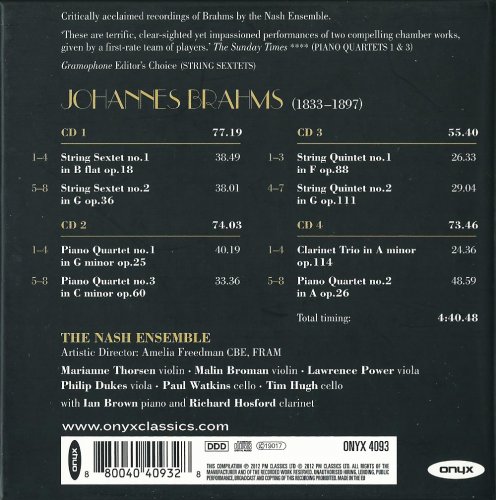
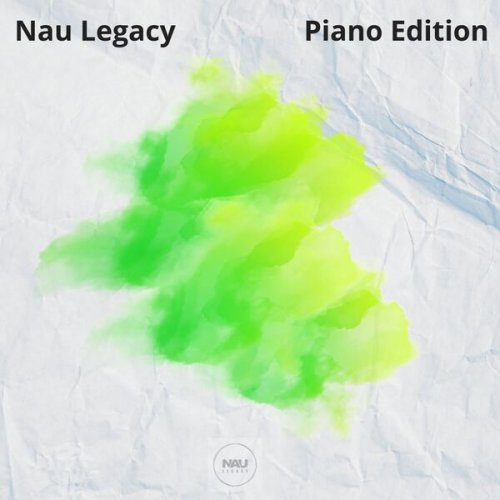


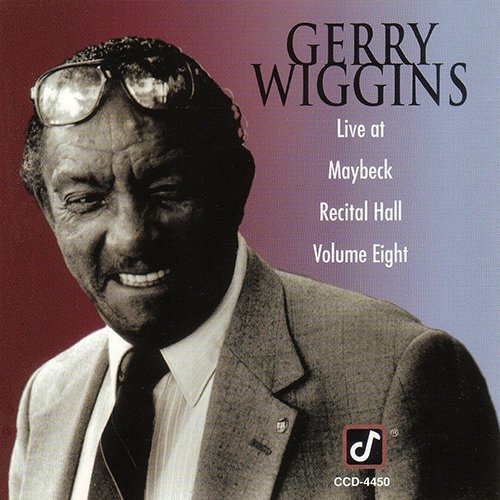


![Sibel Köse Septet - In Good Company (2025) [Hi-Res] Sibel Köse Septet - In Good Company (2025) [Hi-Res]](https://www.dibpic.com/uploads/posts/2025-12/1765846644_uizwujac4ht2d_600.jpg)
![Tomasz Stańko, Tomasz Szukalski, Dave Holland & Edward Vesala - Balladyna (1976/2025) [Hi-Res] Tomasz Stańko, Tomasz Szukalski, Dave Holland & Edward Vesala - Balladyna (1976/2025) [Hi-Res]](https://www.dibpic.com/uploads/posts/2025-12/1765717548_cover.jpg)
